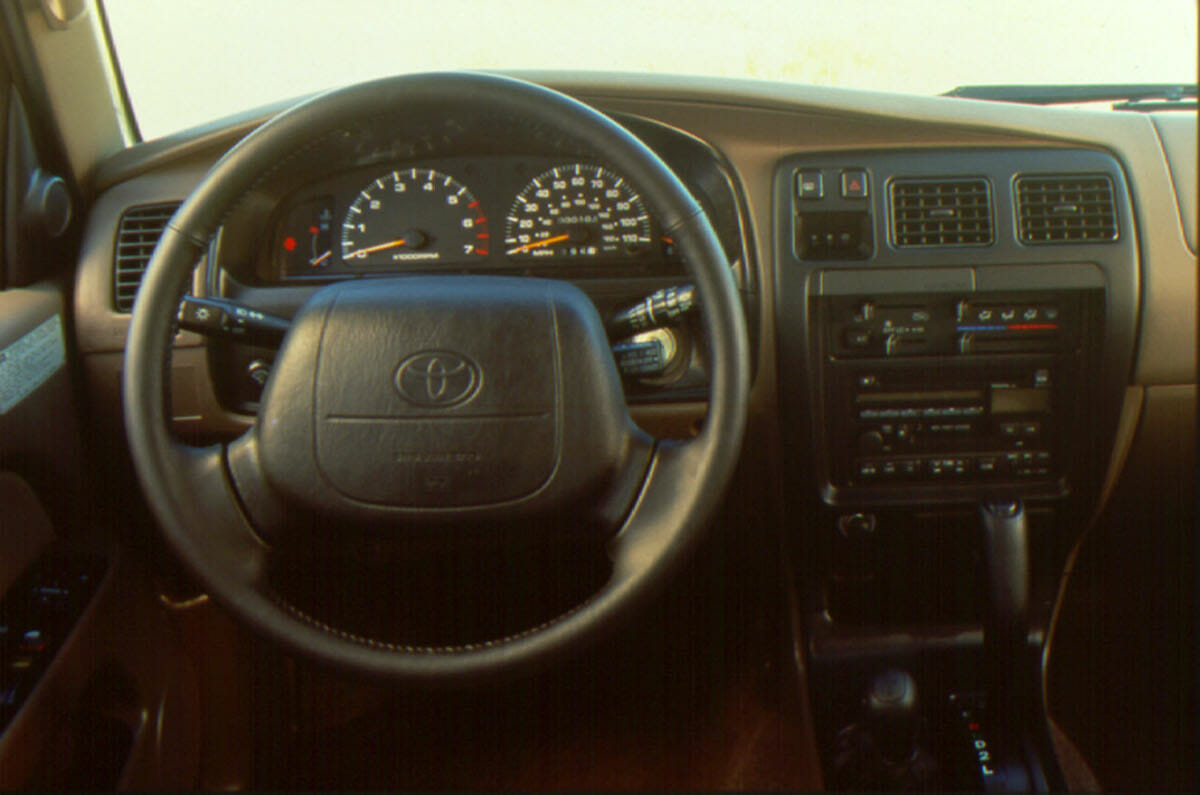Save yourself some time, money & aggravation by knowing how to respond if your Toyota check engine light is engaged.

Your Toyota dashboard’s orange engine-shaped icon is its “check engine” light, an integral part of your vehicle’s diagnostics system. Using an onboard computer and a series of diagnostic codes, this icon emits a steady or flashing orange huge whenever one of hundreds of potential issues affects your vehicle.
First introduced in 1996, check engine lights debuted alongside the second generation of OBD2, a universal built-in self-diagnostic system adopted by all auto manufacturers. Paired with OBD2, check engine lights alert drivers about automobile issues across several manufacturers, as opposed to earlier diagnostic systems that focused on manufacturer-specific issues.
Although Toyota has enjoyed a strong reputation for reliability, earning a spot on J.D. Powers’ 2020 Quality Awards list and Consumer Reports‘ 2020 Auto Reliability Survey, the check engine light may turn on from time to time.
Now, everyone from the average owner to professional Toyota technicians can use the check engine light to diagnose almost any vehicle issue. All post-1996 Toyota models from the RAV4 Hybrid to the Venza have check engine lights.
Keep reading to learn more about what a check engine light is and what to do when your Toyota’s check engine light turns on.

What is a Check Engine Light?
Your Toyota check engine light activates whenever your Toyota’s onboard computer detects a systems issue, such as a faulty transmission, all-wheel-drive lag, emissions control problem, or something as minor as a loose gas cap. It is a part of your vehicle’s onboard diagnostic systems, which monitors thousands of unique variables like engine speed and ignition timing to uncover potential issues.
There are two types of monitoring performed by your Toyota’s engine computer: continuous monitoring and non-continuous monitoring. Continuous monitoring activates when the engine is running, checking for engine timing and misfires. Non-continuous monitoring runs tests at regular intervals or in spots, such as catalytic converters tests after they have reached a certain temperature.

Check Engine Light Diagnostic Codes
All 1996 or later vehicles operate on the OBD-II platform, which is a universal standard for self-diagnosing and reporting.
Including Toyota, all vehicles using the OBD-II platform rely on a series of fault codes, which point to the affected system in question. These trouble codes can be retrieved using an OBD-II scanner, an electronic tool that can read and erase your vehicle’s trouble codes.
Diagnostic tools are plugged into a connector underneath the steering column and spit out a series of five-character fault codes, comprised of a series of letters and numbers that let drivers know what the issue is about.
For example, the first character in the diagnostic code is one of four letters: “P” for powertrain, “B” for body, “C” for chassis, and “U” for network communications. The second digit classifies the type of code as a generic “0” issue specific to all manufacturers or an enhanced/specific issue “1,” which is a manufacturer-specific issue.
Using the diagnostic code B0300 as an example, it can be interpreted as follows: “B” for body, “0” as the generic OBD code (not a manufacturer-specific issue), and the third character referring to a specific system, such as engine management, vehicle computer, emissions, or injector circuit issue. The third character, “3,” refers to an engine misfire. The last two digits are the identifiers. These diagnostic codes are consistent across all Toyota models, including the C-HR and the Tacoma.
Many third-party websites offer different interpretations for trouble codes. However, none may be as accurate as a licensed Toyota mechanic who has experience troubleshooting, diagnosing, and repairing Toyotas with all of the necessary test equipment.
Common Reasons Check Engine Lights Turn on
By far, the most common reason for Toyota check engine lights turning on is a loose, damaged, or missing gas cap. Gas caps work to contain the pressure within the gas tank, preventing fumes from being released into the atmosphere.
Another common reason is a faulty oxygen sensor, which measures unburned oxygen in your vehicle’s exhaust system, responsible for controlling your engine’s air-fuel mixture. If left unchecked, higher concentrations of ethanol or overburn of oil could reduce fuel economy and wear out your spark plugs over time.
Some of the most common check engine light diagnostic codes revolve around low oxygen levels (Codes: P0171 – P0175), engine misfires(Codes: P0300 – P0305 ), evaporative system (Codes: P0411, P0440, P0442, P0446, P0455 ), exhaust gas recirculation issues (Code: P0401) and catalytic converter issues e.g. not operating at max efficiency (Codes: P0420, P0430)
Your Toyota’s catalytic converters can also be a key concern. They are responsible for managing exhaust gas by converting carbon monoxide and other harmful substances into less toxic pollutants, improving overall fuel efficiency. Many components tie directly to catalytic converter health, such as broken spark plugs or faulty oxygen sensors.

What to Do When Your Check Engine Light is on
Before taking any action, it is important to learn a Toyota check engine light’s three main statuses. When a check engine light is off, there is no problem. When a check engine light turns on and stays illuminated, it can mean one of many potential issues, with no initial cause for alarm. Although, it is recommended to have it checked out as soon as possible.
Thirdly, a flashing check engine light is indicative of an engine misfire due to damaged catalytic converters, unburned fuel bleeding into your exhaust system, or a similar issue. This requires immediate attention from a licensed Toyota technician.
In these cases, you can also diagnose the issue yourself using an OBD-II scanner, visiting an independent shop, or taking your vehicle to a licensed technician or dealership. Both latter options may charge a diagnostic fee. However, one major advantage is access to all test equipment, which is an immediate advantage over diagnosing the issue on our own.
Note, it is imperative to address any issues with your Toyota quickly. Overworking a faulty, easy-to-replace oxygen sensor could tear into your catalytic converter, resulting in thousands of dollars’ worth of expenses.

How Do I Reset My Toyota’s Check Engine Light?
Once your Toyota’s issue is resolved, there are three ways to reset a check engine light.
- Use a scan tool: Once your OBD-II scanner is connected to your onboard diagnostic port (under the steering column), turn the ignition on, scan for error codes, and press the “erase’ button in the tool to turn off the check engine light.
- Fix the issue: By default, the check engine light will turn off once the issue is fixed.
- Disconnect and reconnect your Toyota’s batteries: Disconnect your Toyota’s batteries by disconnecting the car battery’s positive and negative cables, draining the electricity, and waiting 20 minutes before reconnecting the battery. This should remove all error codes and turn off the check engine light. Once done, reconnect your car battery’s cables.
Note, Check Engine Light trouble codes are not the be-all, end-all. Just because your diagnostic tool senses an issue with a specific part, it does not mean that part has to be replaced.
All in all, your Toyota check engine light does an exceptional job of revealing one of hundreds of potential issues with your vehicle using the engine computer and easy-to-decipher diagnostic codes. If you see your check engine light turning on, be sure to exercise caution and fix the issue before driving again.
Photos: Toyota
